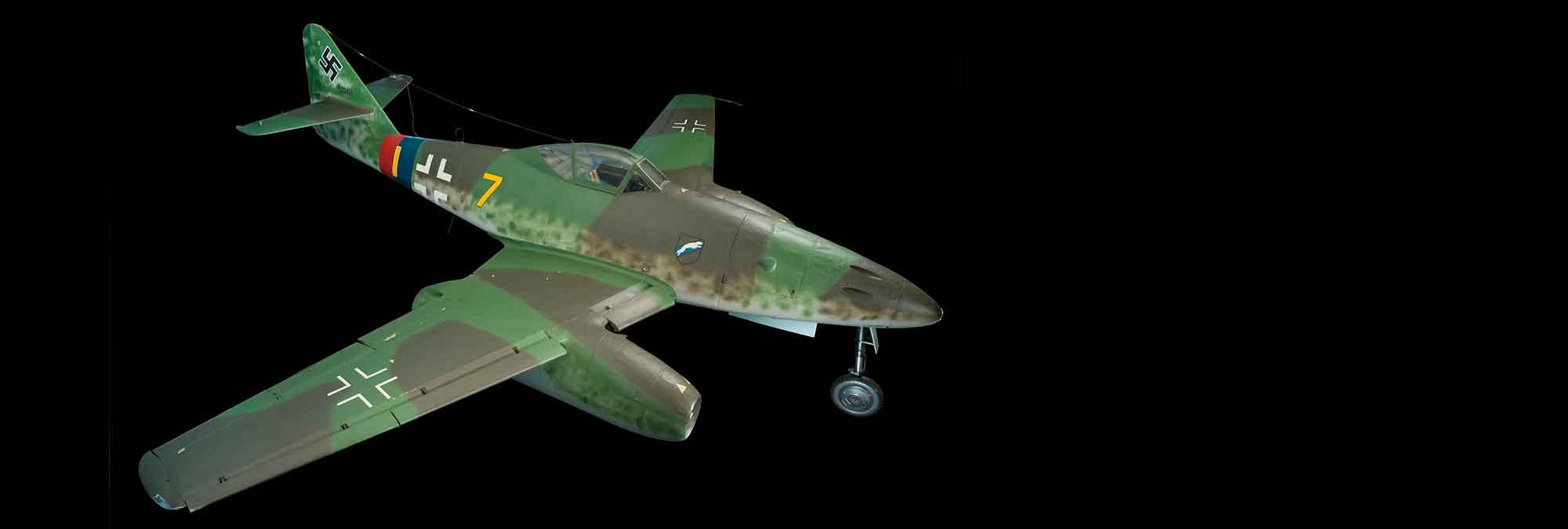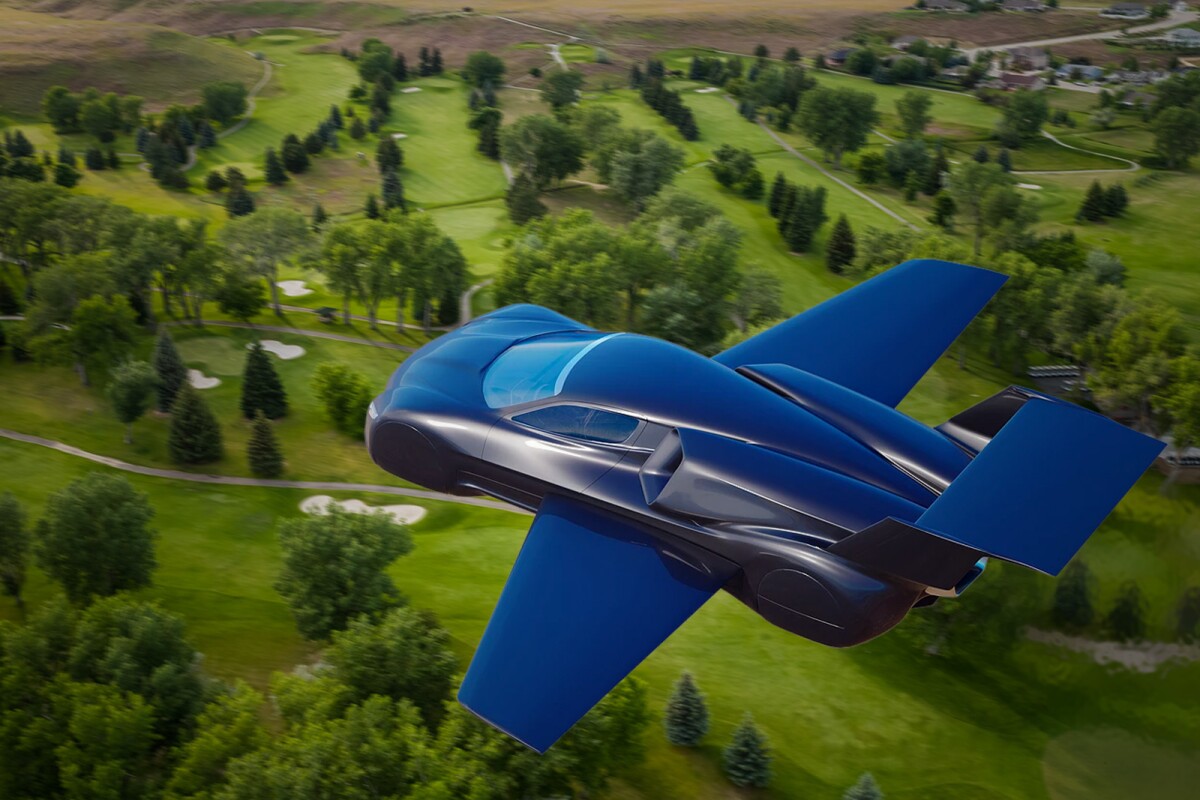Jet Powered Biplane - The Polikarpov Po-2 (also U-2, from its initial uchebnyy, "training", flight instruction aircraft role) served as a Soviet all-weather multi-role biplane, nicknamed the Kukuruznik (Russian: Кукурузник,
NATO reporting name "Mule"). The simple and reliable design of the Po-2 made it an ideal training aircraft as well as a low-cost ground attack, aerial reconnaissance, psychological warfare and wartime liaison aircraft, proving to be one of the most versatile light aircraft. combat types to be built in the Soviet Union.
Jet Powered Biplane

Since 1978 it has remained in production longer than any other aircraft of the Soviet era.
Airbus To Test Hydrogen Jet Engine In Step Towards Zero Emission Aviation
Precise figures are difficult to obtain as low-rate production by small repair shops and air clubs probably continued until 1959.
The aircraft was designed by Nikolai Polikarpov to replace the U-1 trainer (a copy of the British Avro 504), known as the Avrushka to the Soviets.
The U-2 prototype, powered by a 74 kW (99 hp) five-cylinder air-cooled Shvetsov M-11 radial engine, first flew on 7 January 1928, piloted by M.M. Gromov. Pre-production series aircraft were tested in d 1928, and serial production began in 1929 at factory number 23 in Lingrad. Its name was changed to Po-2 in 1944, after Polikarpov's death, under the new Soviet naming system, usually using the first two letters of the designer's surname, or the design office established by the Soviet government that created it. Production in the Soviet Union ended in 1953, but license-built CSS-13s were still being produced in Poland until 1959.
From the beginning, the U-2 became the basic Soviet civilian and military training aircraft, mass-produced at a "Red Flyer" plant near Moscow. It has also been used for transport and as a military liaison aircraft, due to its STOL capabilities. At first it was also produced as an agricultural aircraft variant, earning it the nickname Kukuruznik (corn man). Although greatly outclassed by contemporary aircraft, the Kukuruznik saw extensive service on the Eastern Front during World War II, primarily as a liaison, medical evacuation and general supply aircraft. It was particularly useful in supplying Soviet partisans behind the German front line. Production of the Po-2 in the USSR ceased in 1949, but until 1959 several were assembled in the Aeroflot repair shops.
Turbojet Engine Archives
During the defense of Odessa in September 1941, the U-2 was used as a reconnaissance aircraft and as a short-range light bomber. The bombs, dropped from a civilian plane piloted by Piotr Bevz, were the first to fall on my artillery positions.
Nikolay Polikarpov supported the project and under his leadership the U-2VS (voyskovaya seriya - military series) was created. It was a light night bomber, equipped with bomb racks under the lower wing, to carry 50 or 100 kg (110 or 220 lb) bombs up to a total weight of 350 kg (771 lb). ) and armed with a ShKAS or DA machine. weapons in the observer's cabin.
The U-2 became known as the aircraft used by the 588th Night Bomber Regiment, consisting of a female pilot and a full ground crew. The unit was known for its daring low-level night raids on German rear positions. Veteran pilots Yekaterina Ryabova and Nadezhda Popova once flew eight missions in one night. Female pilots observed that servicemen suffered an additional degree of demoralization simply because their antagonists were women. As such, the pilots earned the nickname "Night Witches" (German Nachthex, Russian Ночные Ведьмы / Nočnye Ved'my). The unit won numerous Heroes of the Soviet Union citations and dozens of medals of the Order of the Red Banner; most of the surviving pilots had flown close to 1,000 combat missions by the end of the war and participated in the Battle of Berlin.

The material effects of these missions may be considered minor, but the psychological effect on the German troops was noticeable. They often attacked by surprise in the middle of the night, the dying German troops sleeping and keeping them standing, adding to the already high stress of fighting on the Eastern Front. The usual tactic was to fly just a few meters above the ground, climb for final approach, rev up the engine and perform a glide bombardment, leaving the target troops with only the odd whistling of the wind on the wing strut wires. an indication of the impending attack.
Close Up View Of Airplane Biplane With Piston Engine And Propeller On A Cloudy Sky Background Stock Photo, Picture And Royalty Free Image. Image 94718062
Luftwaffe fighters found it extremely difficult to shoot down the Kukuruznik due to two main factors: the pilots were flying at tree level, where they were difficult to see or measure, and the stall speed of the Messerschmitt Bf 109 and Focke-Wulf Fw 190 was similar at the top speed of the U-2, making it difficult for fighters to keep a Po-2 in range for an adequate period of time.
The success of the Soviet night-harassment units inspired the Luftwaffe to establish similar Störkampfstaffel "harassment fighter squadrons" on the Eastern Front using their own obsolete 1930s biplanes (mostly Gotha Go 145 and Arado Ar 66 biplanes) and aircraft parasol monoplanes, which eventually evolved into monoplanes. larger Nachtschlachtgruppe (night attack group) units of a few squadrons each.
The Polish Air Force used these slow and maneuverable aircraft for aerial reconnaissance and COIN operations against UPA detachments in the mountainous region of Bieszczady. Pilots and navigators were sent to search for concentrations of UPA forces and, if necessary, calibrate them with machine guns and ranks. On several occasions the UPA managed to shoot down some of the Po-2s, but never captured or exploded them.
The U-2's 5-cylinder engine had an unusual exhaust manifold arrangement that gave the engine a distinctive rattling noise that made the aircraft easily identifiable even at night. German soldier Claus Neuber listed in his war diary six different German nicknames for the aircraft, the most common of which were Nähmaschine (sewing machine) or Kaffeemühle (coffee grinder), both due to the distinctive sound of the engine. Neuber added that some German troops mockingly called him the "Crow of the Track" or "Crow of the Fog". He also cited the nicknames "Iron Gustav," because of the belly armor the plane wore to protect it from ground fire, and "The Duty NCO" because the plane almost always arrived at the same time at night.
The Cirrus Sf50 Vision Jet Is The World's Smallest And Most Affordable Private Jet
The fabric and wood construction of the plane made it extremely vulnerable to fire when hit by tracer bullets, earning it the Russian nickname Kerosinka, or kerosene lantern.
North Korean forces used the Po-2 in a similar role during the Korean War. A significant number of Po-2s were deployed by the Korean People's Air Force, causing heavy damage in night raids on United Nations bases.
During one such attack, a single Po-2 attacked the Pyongyang airfield in northwestern Korea. Focusing on the parking ramp of the 8th Fighter-Bomber Group, the Po-2 dropped a series of cluster bombs on the group's range of P-51 Mustangs. The Mustang Elev were damaged, three so badly that they were destroyed, while Pyongyang was abandoned a few days later.

On June 17, 1951, at 1:30 a.m., Suwon Air Base was bombed by two Po-2s. Each biplane dropped a pair of cluster bombs. One hit the engine pool of the 802nd Aviation Battalion Gineer, damaging some equipment. Two bombs explode on the flight line of the 335th Fighter Interceptor Squadron. An F-86A Saber (FU-334/49-1334) was hit in the wing and burst into flames. The fire spread, gutting the plane. Prompt action by personnel to move the aircraft away from the burning Saber prevented further casualties. Eight other Sabers were damaged in the brief attack, four of them seriously. An F-86 pilot was among the wounded. The North Koreans later credited Lieutenant La Woon Yung with this damaging attack.
Everest 1:72 He162 Conversion Sets (c7201/c7202) Review
UN forces called the Po-2's night appearance Bedcheck Charlie and had great difficulty shooting it down, even though night fighters had radar as standard equipment in the 1950s. and the Po-2's fabric had only a small radar section , which made it difficult. for an opposing fighter pilot to acquire his target. As American Korean War veteran Leo Fournier commented about "Bedcheck Charlie" in his memoirs: "...nobody could catch him. He just flew too low and too slow." On June 16, 1953, a USMC AD-4 of VMC-1 piloted by Maj. George H. Linnemeier and CWO Vernon S. Kramer shot down a Soviet-built Polikarpov Po-2 biplane, the Skyraider's only documented aerial victory. The Po-2 is also the only biplane credited with a documented accident, as a Lockheed F-94 Starfire was lost while slowing down to 161 km/h (100 mph) - below its stall speed - during an intercept to be able to measure the Po-2 flying at low altitude. The PZL M-15 was a jet-powered sesquiplane designed and manufactured by the Polish airline WSK PZL-Mielec for agricultural aviation. In reference to both its strange appearance and relatively loud jet engine, the plane was nicknamed the Belphegor, after the noisy demon.
The development of the M-15 dates back to the Soviet requirement for a modern agricultural aircraft to succeed the Antonov An-2; it was at the insistence of Soviet officials that jet propulsion would propel the type. WSK Mielec's design team recognized the value of the An-2's biplane configuration for the role and began developing
Jet biplane, surfango jet powered kayak, jet powered pontoon boat, jet powered dinghy, jet ski powered boat, jet powered boats, jet powered wakeboard, jet powered surfboard, jet powered board, solar powered jet ski, jet powered fishing kayak, jet powered
0 Comments